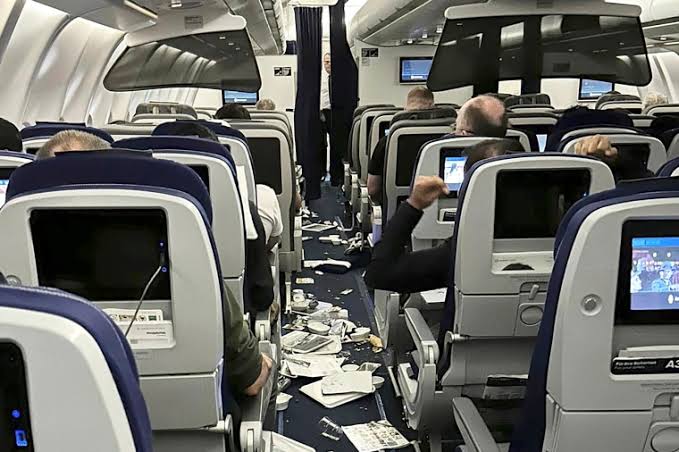Tragedy on WestJet Flight: Passenger Found Dead Upon Arrival at Calgary Airport
Tragedy on WestJet Flight: Passenger Found Dead Upon Arrival at Calgary Airport
A routine flight turned tragic on Monday when a passenger was found dead aboard a WestJet aircraft upon its arrival at Calgary International Airport. The incident has sparked a wave of concern and questions from fellow travelers, aviation authorities, and the broader public.
Shocking Discovery After Landing
According to reports, the aircraft had arrived in Calgary after a domestic flight from Toronto. Crew members discovered the unresponsive passenger during disembarkation procedures after the plane had landed safely and reached its designated gate.
Emergency medical responders were immediately called to the scene. Despite their efforts, the passenger was declared dead on-site. The identity of the individual has not been released pending notification of next of kin, but officials confirmed the deceased was an adult male, believed to be in his late 50s.
WestJet Responds
In an official statement, WestJet expressed its deep condolences to the family and friends of the deceased. The airline emphasized that the safety and well-being of its passengers is its top priority and that crew members followed all standard protocols once the situation became known.
> “We are deeply saddened by the news of a guest who was found unresponsive on board one of our flights upon arrival in Calgary. Our hearts go out to their loved ones during this difficult time,” the statement read.
WestJet further confirmed that an internal review is underway and that they are fully cooperating with authorities, including the Calgary Police Service and the Transportation Safety Board of Canada.
Passenger Accounts and In-Flight Experience
Some passengers on board the flight have since come forward with their accounts of the situation. According to one traveler seated a few rows behind the deceased, there were no overt signs of distress during the journey.
> “It was a completely normal flight. I didn’t notice anything strange or alarming,” said Sarah Delaney, a passenger who spoke to local media. “It wasn’t until we landed and people were starting to get off that things became tense. The crew asked everyone to remain seated. That’s when we realized something was wrong.”
Another traveler mentioned that flight attendants had quietly moved toward the rear of the plane shortly after the landing announcement. While most passengers assumed it was a routine matter, it became evident upon landing that a medical emergency had occurred.
Possible Medical Emergency
While the official cause of death has yet to be confirmed, early indications suggest the passenger may have suffered a medical emergency during the flight, such as a heart attack or stroke. No foul play is suspected at this time, and authorities have ruled out any threat to the safety of other passengers or the flight crew.
Medical examiners will conduct a post-mortem examination to determine the precise cause of death. A toxicology report is also expected in the coming days, although such procedures can take several weeks to yield results.
Experts on In-Flight Medical Emergencies
Medical emergencies on flights are relatively rare but not unheard of. According to a study published in the New England Journal of Medicine, about 1 in every 600 flights experiences some type of medical event. While most involve minor symptoms such as dizziness or nausea, more severe cases—including cardiac arrests—do occur and are often fatal if immediate medical attention is not possible.
Dr. Andrea Keller, an aviation medicine specialist, explained the challenges of dealing with such incidents mid-flight.
> “Cabin crew are trained to handle a wide range of medical situations, and most flights carry basic medical kits and defibrillators. However, there are limitations to what can be done at 35,000 feet, especially without a doctor on board,” she said.
She also noted that underlying health conditions and the effects of high-altitude environments can pose risks, particularly for older passengers.
What Happens When a Death Occurs In-Flight
When a death is confirmed on a flight, airline crew follow specific procedures. First, they alert ground control and medical teams to be ready upon landing. The body is usually left in place if the aircraft is in descent or if there are safety risks in moving it. After landing, emergency personnel officially declare death, and law enforcement may initiate an investigation depending on the circumstances.
In most cases, the airline is required to file an incident report, and the local coroner takes custody of the body. If the death occurred during an international flight, additional protocols related to customs and immigration may be necessary.
Support for Passengers and Crew
In the wake of the incident, WestJet confirmed it would be offering counseling services to affected passengers and staff. Flight attendants and crew members, in particular, often bear the emotional burden of such events and are encouraged to seek support through employee assistance programs.
Passengers were also provided with contact information for support services should they need to speak with someone following the traumatic experience.
A Sobering Reminder
The unexpected death of a fellow traveler serves as a somber reminder of the unpredictability of life and the importance of in-flight health precautions. Experts advise passengers, especially those with pre-existing medical conditions, to consult with their doctors before flying and to carry necessary medications with them in the cabin.
As investigations continue, authorities hope to provide closure to the grieving family and shed more light on the incident. For now, the aviation community mourns the loss and reflects on how to better handle such emergencies in the future.






